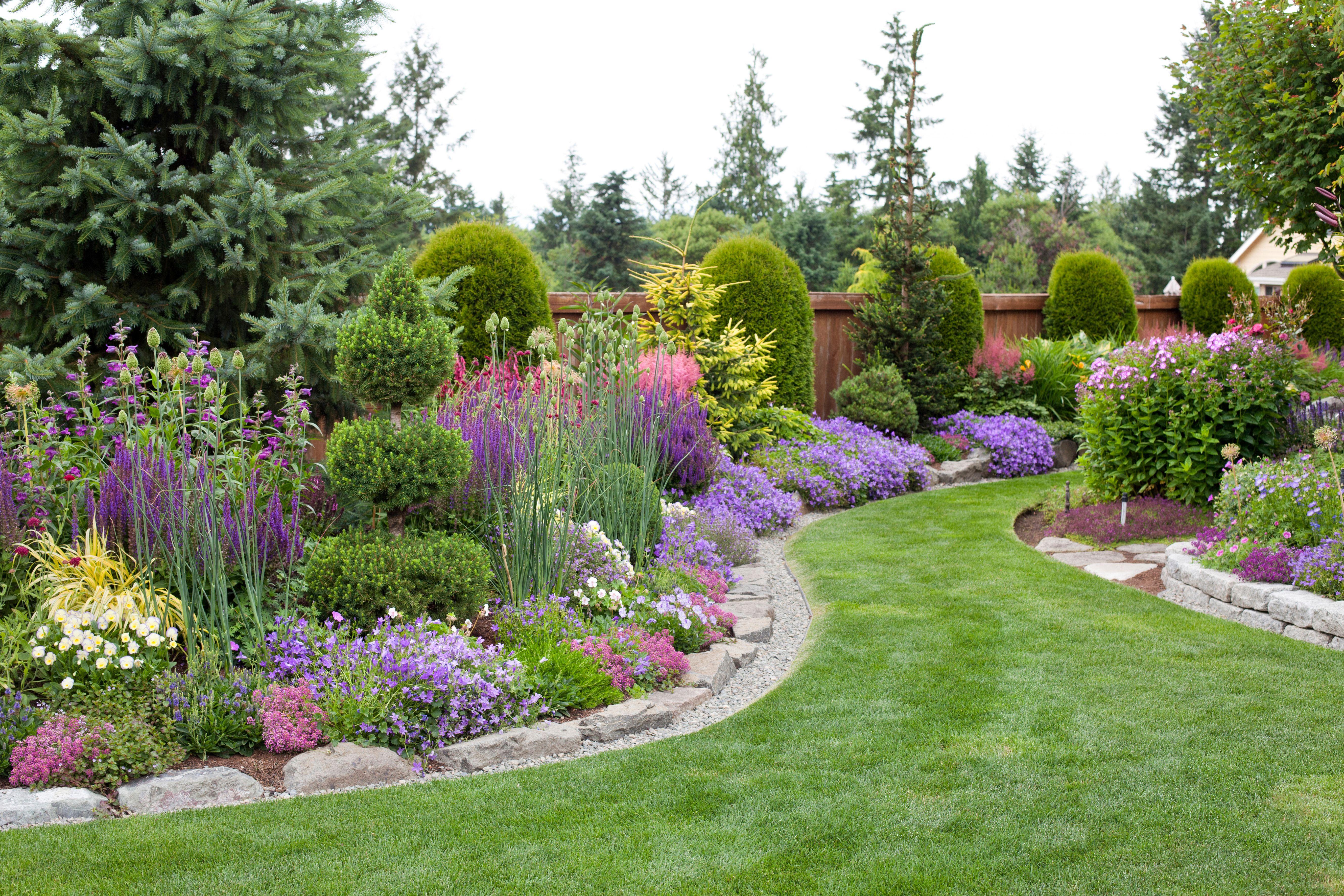In tandem with regular mowing, keeping an immaculate lawn edge is a landscape superpower that instantly makes your yard look tidy and well maintained. A crisp, clean-cut lawn edge creates clear boundaries between grassy areas and planting beds, walkways, and curbs. And it's not all that difficult to achieve. Use this simple, step-by-step guide to edge your lawn correctly.
Why to Edge Your Lawn
A freshly cut lawn edge not only looks good, it makes garden maintenance easier. A lawn-to-bed edge creates a no-grow zone, or void, between the turf and everything else. The no-grow zone prevents lawn grass, which spreads by roots or above-ground stems, from creeping into planting beds and other places you don't want it. A cut lawn edge works by creating a small V-shaped trench between the lawn and other areas.
Related
How to Create a Cut Lawn Edge
Make a cut lawn edge wherever your turf joins open soil. Use a cut lawn edge to accentuate a planting bed and keep grass out of a vegetable garden. Edge the open maintenance strip along a fence to keep grass from creeping into the no-mow zone. The border around a mulched playground space is a great spot for a cut lawn edge. Resist the urge to edge around trees; healthy trees can be compromised when surface roots are severed during the edging process.
1. Map an Outline
A cut lawn edge can be curved or straight. Modern architecture styles lend themselves to straight edges, while cottage-inspired gardens pair well with gentle curves. Take time to outline the bed edge so you can visualize the final look.
Use a garden hose to mark a curved bed edge. For easy mowing along a curved bed edge, aim to create a gentle curve that is easy to navigate with your lawn mower. A 2x4 board or a PVC pipe is useful for laying out a straight bed edge.
Leave the outline in place overnight so you can take a fresh look in the morning.
2. Make the Cut
Working on the turf side of the soon-to-be edge, use a sharp flat spade or a half-moon edger—also called a turf edger to cut straight down into the sod along the outline. Aim to sink the spade or half-moon edger 4 to 6 inches into the soil. A tool with a footplate and sturdy handle is essential for gathering enough power to cut through thick turf.
3. Create the Trench
Next, remove the turf and soil along the edge of the bed. Working from the non-turf side of the edge, use a spade at a 45-degree angle to lift the cut sod and accompanying soil. When you are finished removing the sod along the bed edge, a 4- to 6-inch-deep V-shape trench should be visible.
4. Fine Tune the Bed
Using the sharp flat spade, skim off additional soil as needed along the bed edge to create an even contour. Mulch will soon cover the soil, and it is essential the terrain is smooth for a clean, finished look.
5. Add Mulch
Create a clean finish by spreading a thin layer of mulch over the entire landscape bed. A 2-inch-thick layer is adequate for suppressing weeds. After you spread mulch, the V-trench should still be clearly visible. Spread the mulch carefully to avoid filling in the trench.
The best mulch is an organic mulch such as shredded bark, pine needles, cocoa hulls, compost, or finely shredded grass clippings. Organic mulch will decompose, enriching the soil as it does so.
6. Be Ready for Maintenance
After creation, a V-trench edge demands refreshing in spring and then every two months during the growing season. Use a flat spade or half-moon edger to recut the edge, severing roots and stems that are creeping into the bed. Skim away cut soil and sod.
Edging Sidewalks, Driveways, and Paths
When edging sidewalks, driveways, and paths, use a flat spade or half-moon edger to create a clean line between the lawn and adjoining surfaces. Instead of making a V-trench, simply sever the roots and stems that are encroaching on the nearby surface. Repeat as necessary throughout the season.
Alternate Physical Barrier Edge
Cast stone edgers, known as bullet edgers, as well as natural stone, vinyl, rubber, or steel edging materials, are all useful edging methods. They keep grass out of a bed by putting a physical barrier in place. Physical edging products like these require minimal maintenance after installation, but their upfront cost is notable, whereas the cost of a cut edge is primarily in the time needed to create and maintain it.



